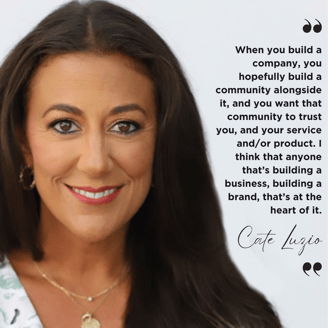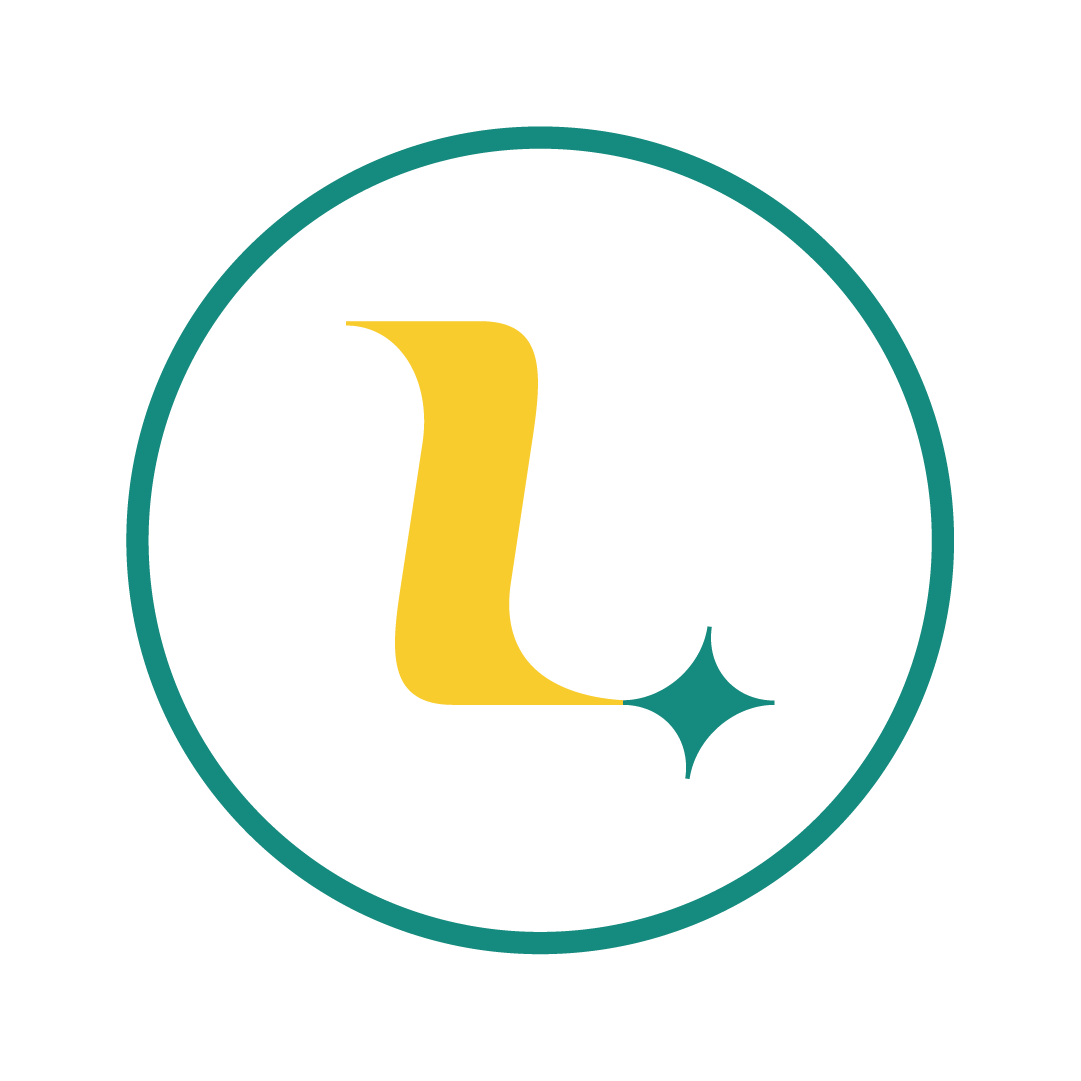In November 2018, a new woman-founded small business soft launched at its New York City location. That business was Luminary. At the start, there were three tiers of membership for individuals all based around hours of space usage, programming access and flexible amenities for people on the go, whether they were building their businesses, finding the next opportunity, meeting clients or looking to advance their careers. Luminary also had a Corporate offering for those companies with employees in the New York area looking for professional development and access to events and programs. Less than a year and a half after this launch, the COVID-19 lockdown began, complicating Luminary’s ability to deliver what many of their Members signed up for: space access, or so they thought.

Luminary’s Founder and CEO, Cate Luzio, saw to it that scheduled events went on as planned, but shifted the space to digital, overnight. She worked hard to assure Members got what was promised from the beginning: community. Now, four years after Luminary’s launch, its memberships are divided, Space and Digital for individuals and groups along with Corporate Memberships for companies committed to investing in their pipeline through learning, education and networking.
This week, Luminary Reflections sat down with Cate to talk a bit on why you should market your business in a virtual community.
Luminary Reflections:
Can you talk specifically about how Luminary’s business model and marketing strategies changed to handle the drastic cultural shift in 2020?
Cate Luzio:
The business model didn’t necessarily change; how we delivered it evolved and continues to. Prior to March of 2020, everything was held in our space. So, workshops, events, all of the sessions that we led, networking–everything was done in-person; there was nothing with a core digital focus. March 2020 that changed on a dime. We went from everything being hosted in person in our New York City location to online. We had a unique opportunity to reach more of our audience, because whether they were in Tulsa, London, Chicago, Brazil–they could have access to our community and our platform. We could deliver programming and great content. And we built an educational, high touch digital platform for our Members, The Link, to create more opportunities for engagement and impact.
The marketing side didn’t necessarily change either, aside from the messaging around how we now could deliver access to a broader audience with deeper impact around the world, not just focused on New York City. This allowed us to touch and help so many new women - and male allies - in particular across all professional journeys. At the start, people didn’t necessarily know Luminary outside of the New York City area, so we took a moment to really think strategically about brand awareness, and building campaigns in specific cities where maybe we wanted to grow our member base. And the way we did that, first and foremost, was through the first Fellowship program we launched. This first Fellowship program gave us a unique opportunity to really market online in nine cities outside of New York, which propelled us forward around awareness, and the amplification of our brand, and allowed us to dispel with the idea that Luminary was just a space and you could only access our resources and tools in NYC.
What successes has Luminary found through an emphasis on a virtual community?
Look at it through two lenses: the B2B model, who are our corporate Members, and the B2C model, our individual Members. So for the Corporate offering, if I was partnering with JPMorgan Chase or Spotify prior to our digital evolution, the only people within that organization that could benefit from our community, our programming, and our content were those who were within the New York Area, or who were at least traveling to New York. Overnight, it didn’t matter if they were in New York, because everything was being communicated and delivered online. And the same on the B2C side. Before it was, “come into the space, take a workshop, go to an event, meet someone.” And now, we’re creating those unique opportunities to connect, collaborate, learn and develop online. For us, our marketing adapted to the new landscape. We’re not, and never have been, just a pretty space; we’re a platform for all genders to take advantage of everything we offer personally and professionally. And it hasn’t been easy. When you run a physical space as part of your business, it’s a natural tendency for someone to lump you in with other spaces. But I’m very vocal about the fact that we’re not a traditional co-working space. Our space is an amenity, just like our DIY beauty bar and fitness studio it helps us deliver to our community, but we’re equally delivering through our virtual platform, and I think only about 30% of our total member base now are in the New York Area.
Have you met many digital members on #InThisTogether Tour?
So many! That was the reason we started the tour. Whether or not Luminary itself expands geographically, we want to meet the Members who have joined us virtually in cities we’re not physically in. And some of our Members left New York and relocated to other cities during the pandemic, so we also wanted to stay connected to them. When we started to build and expand this virtual community, what we saw was people were coming for the community and connection, and we wanted to go out and meet them as well. We wanted to be in real-life with them, even if we’re not with them IRL all-year round. And it’s been incredible to meet our Members, old and new, that joined through that first inception of a digital membership all the way through to our Fellowship Program.
What’s interesting with our digital members is–very similar to to our space members in the New York area–you have a big combination of women that are building their own businesses, they identify as founders and entrepreneurs, some that are new in their journey, some that have been doing it for 20 years; and then you have women in the traditional workforce, they have a boss, they’re working for someone, that could be a small company, that could be a large company, but they’re not a business owner. We have a huge number of those women that are in our community, but then we have all of these women that work for our corporate Member that we’re also trying to touch in these cities that may have only met us virtually. We also have a big population of women in transition, those who are figuring out their next step, reentering the workforce in some way, and some who have relocated to these cities and just want to find their community. We’re providing a vehicle for that when we’re on the ground as part of the tour, and through our digital presence and the virtual community.
What advice do you have for anyone trying to establish and market in a virtual community?
I think the first thing is always around communication and being honest, open, and vulnerable. When I go back and look at our original business plan, and I talk quite often about building a business plan, the word digital or virtual didn’t really make an appearance. It was all around that physical connection. No one could have predicted a pandemic. But, when Covid hit and all of a sudden we were on lockdown and we didn’t know how long it was going to last, we knew we had to be there for the community–in the good times and the bad times - that’s a community. So, I started writing a regular email to the community, personally from myself, around what was happening, where we were, where did we stand, the challenges we as a company were facing, the challenges we heard our members were facing, why we were making certain decisions, why we were pulling back on certain things and doubling down on others… And I think that all leads back to this idea of transparent communication, being there, exposing yourself to what’s happening around you. When you build a company, you hopefully build a community alongside it, and you want that community to trust you, and your service and/or product. I think that anyone that’s building a business, building a brand, that’s at the heart of it. When I started my career in banking, over every single door in the building of the company I worked for, it said, “Think of yourself as a Customer.” And that’s something I’ve carried with me throughout my career. How we’ve shown up as a company, as a brand, as a community is not about me, or my ego, or the growth or the money. It’s about our Customer with a capital C. We don’t exist without them.






Comments